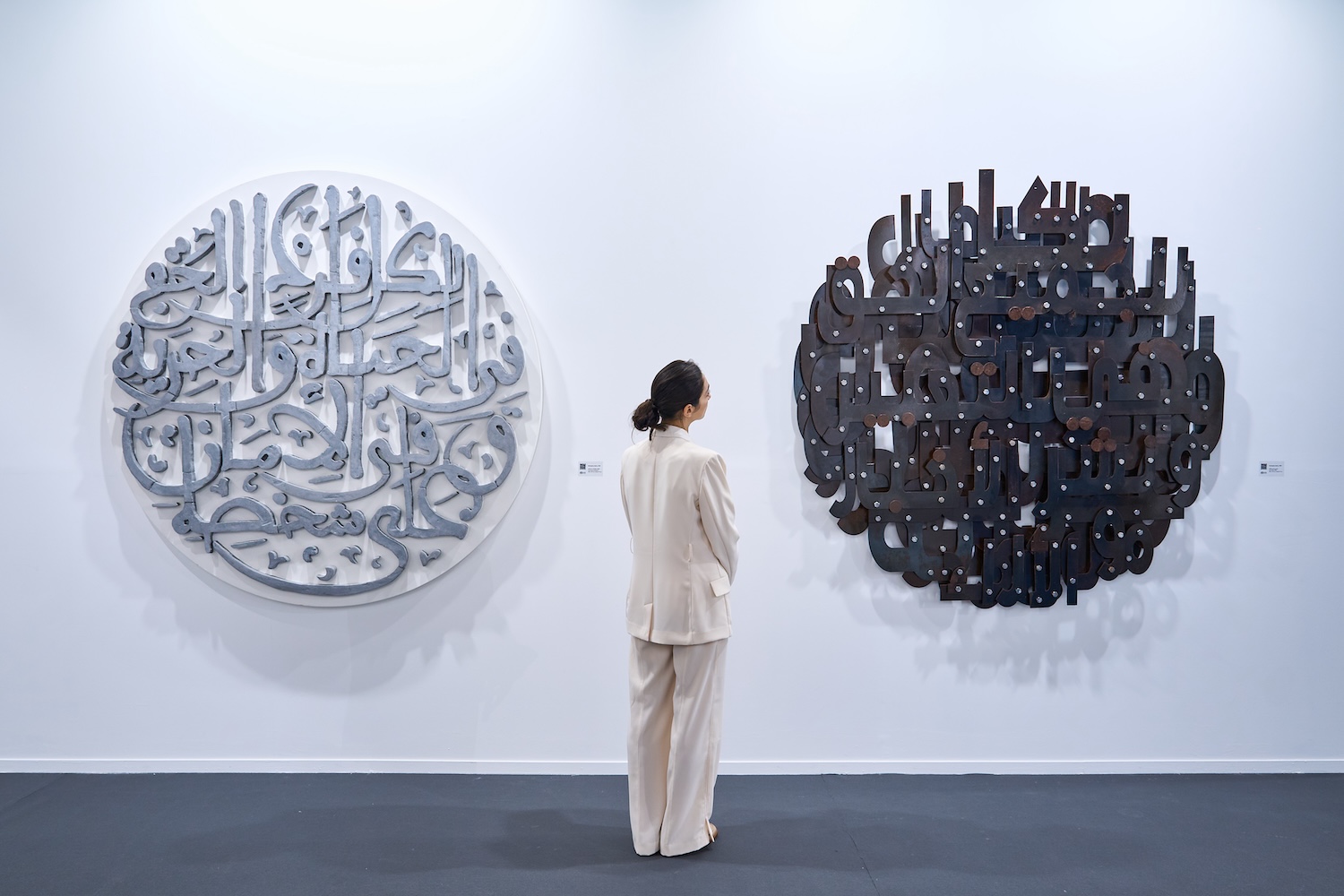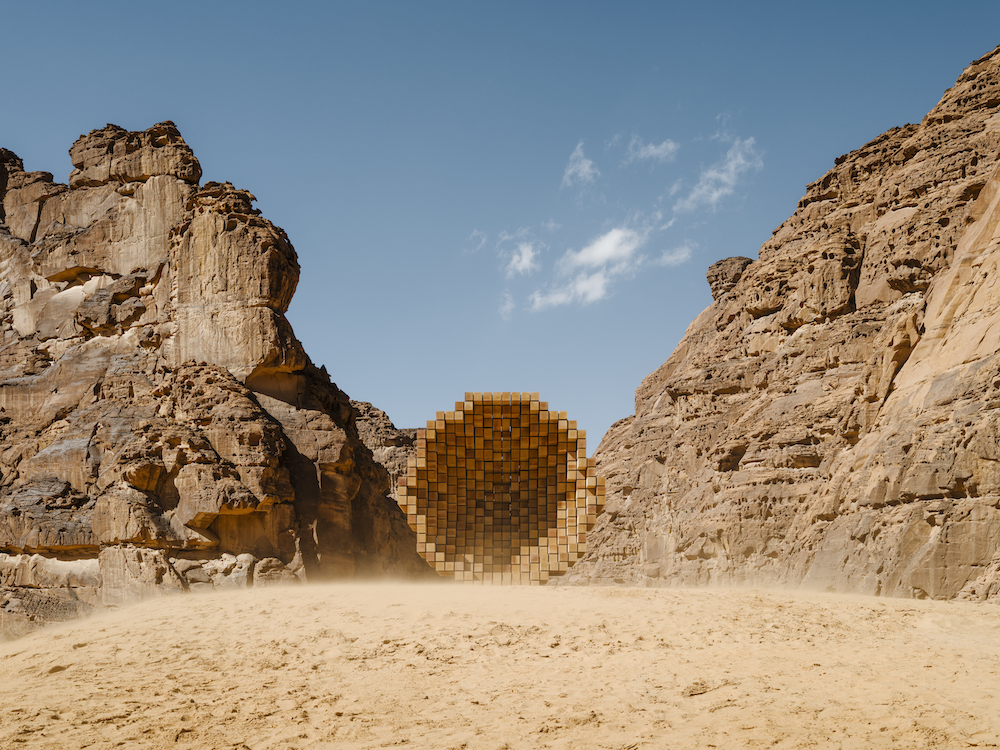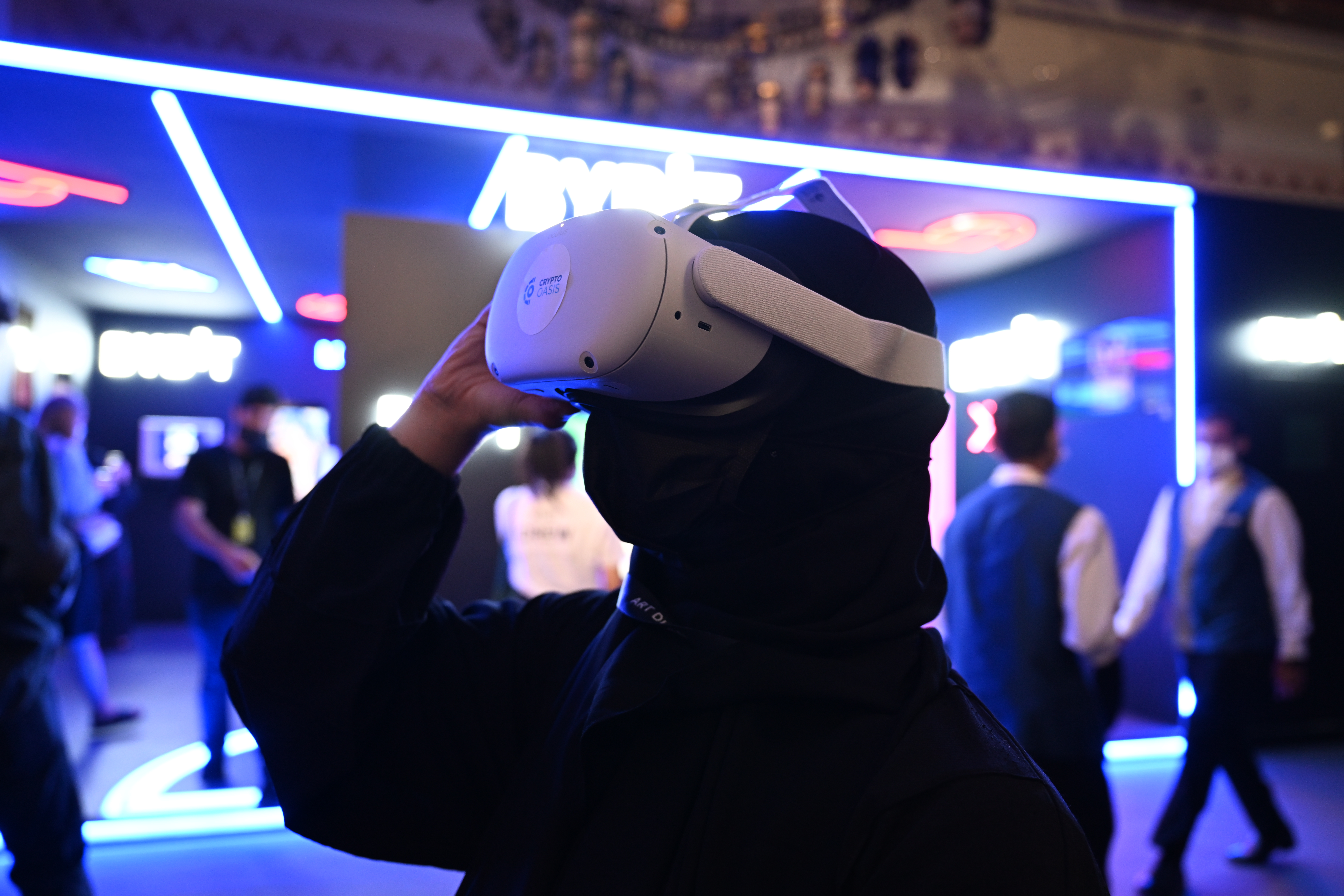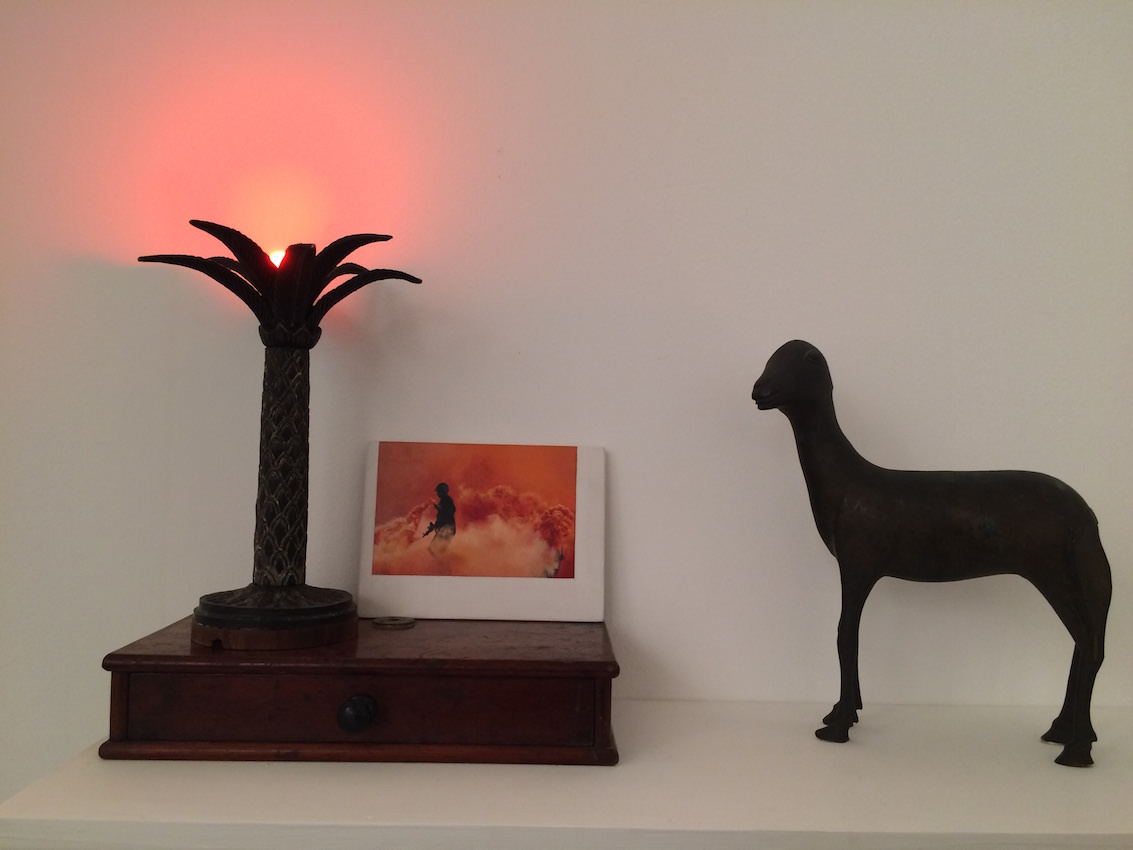Before stepping foot into Art Dubai earlier this month, I challenged myself to avoid all details about the theme and curation as I wanted to determine if I could understand it without any prior excessive knowledge.
As I kept going back and forth between the halls, I noticed recurring visuals related to daily life (that said, I wouldn’t confidently include digital within this statement and what follows). Under this umbrella, we can find the works of artists who document cultural rituals and practices that either express joy, pain, political history, or a connection with nature. Many of the works revealed a sense of national pride, but grim undertones painted a considerable base of the fair.
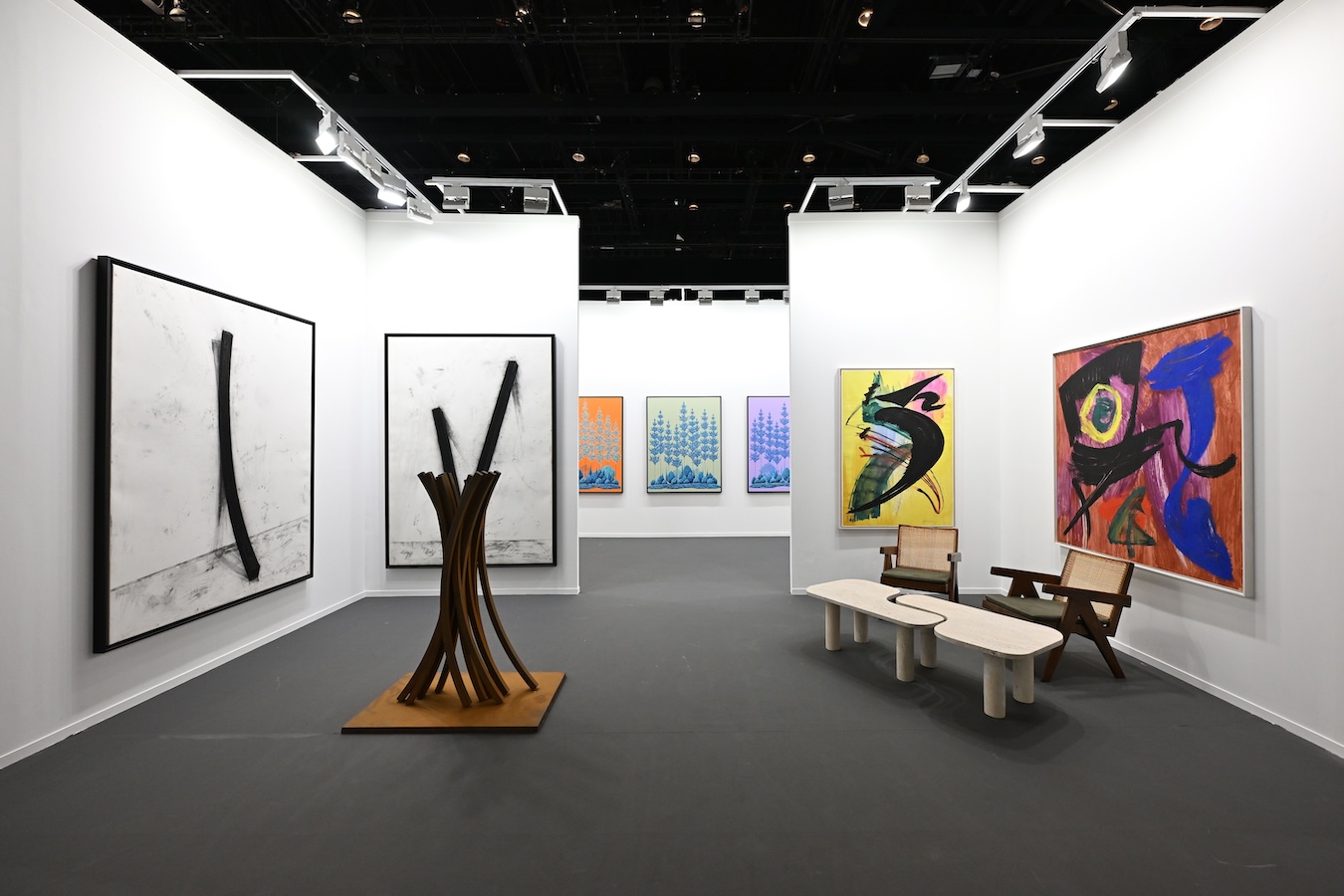
Photo by Cedric Ribeiro/Getty Images, courtesy of Art Dubai.
Themes of Healing and the Modern-Day Diaspora at Art Dubai
Halfway through the first day, I decided to read more about the annual theme and was pleased to find that I wasn’t so far off. For example, the theme for “Bawwaba” (Arabic for “gateway”), curated by Emiliano Valdés and featuring artists from Latin America, the Middle East, and South Asia, was “Healing.” The Modern selection, curated by Dr. Christianna Bonin, analyzed the factors that influenced the Global South—the significant yet untold modern histories arising from the cultural exchanges between Arab, African, and South Asian countries and the Soviet Union after World War II.
Art Dubai’s Artistic Director, Pablo del Val, aimed to initiate more profound conversations about the Global South and highlight displacement and modern-day diaspora topics. He described the Global South as a state of mind rather than a geographic location, which was reflected in the diverse work on display.
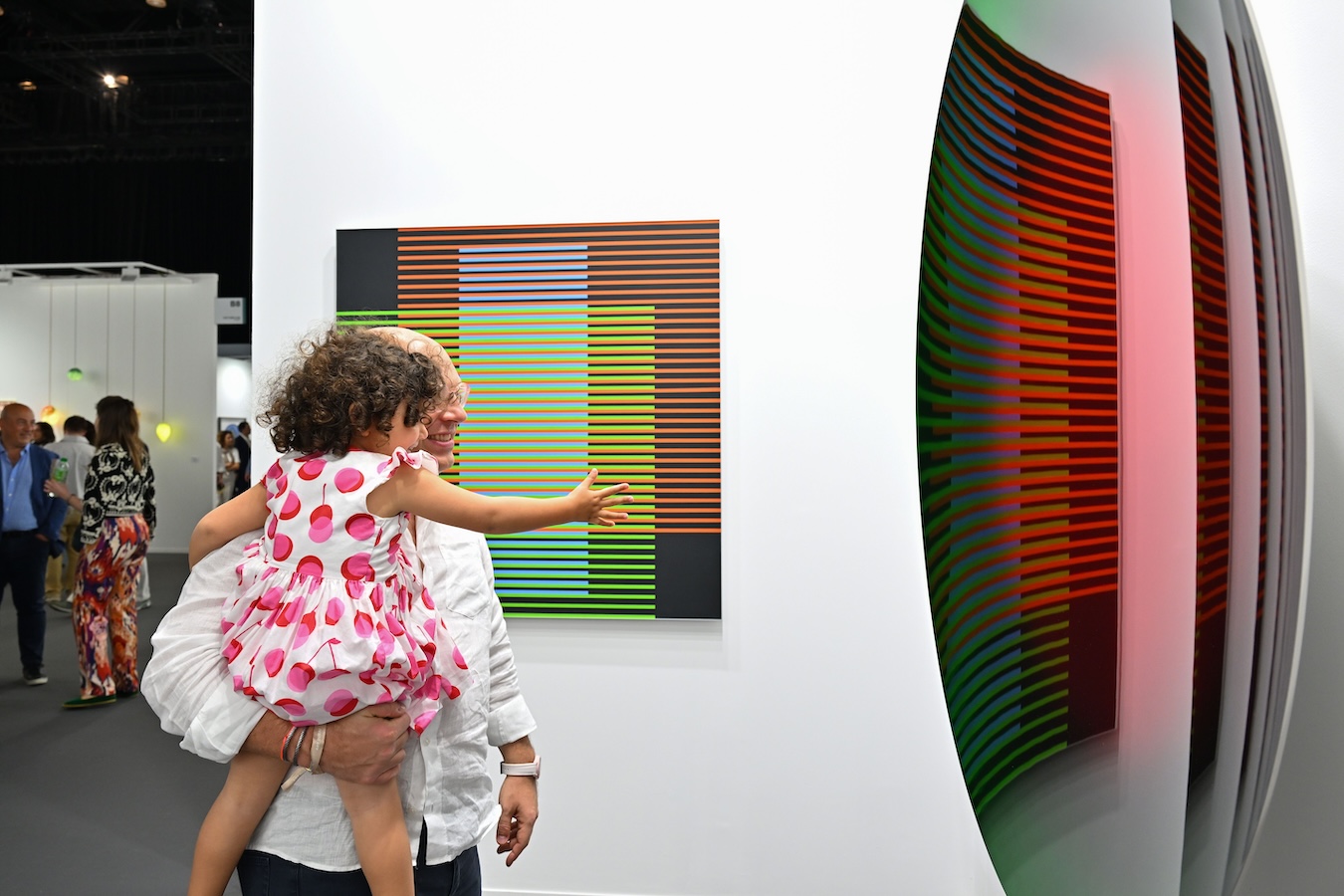
Photo by Cedric Ribeiro/Getty Images, courtesy of Art Dubai.
The 17th Edition of Art Dubai Returns with Digital Pivot
Between March 1 and 3, the annual art fair returned to the public for its 17th edition with over 120 galleries from 40 countries. The fair also had a “Dubai Collection” called Encounters, curated by Alia Zaal Lootah. The corner exhibition showcased a collection of modern and contemporary works from Emirati artists such as Mohamed Ahmed Ibrahim, Maitha Abdalla, Hashel Al Lamki, and more.
Located in its usual spot in Madinat Jumeirah amongst 5-star hotels and resorts, Art Dubai was divided into fours: Contemporary, Modern, Bawwaba, and Digital.
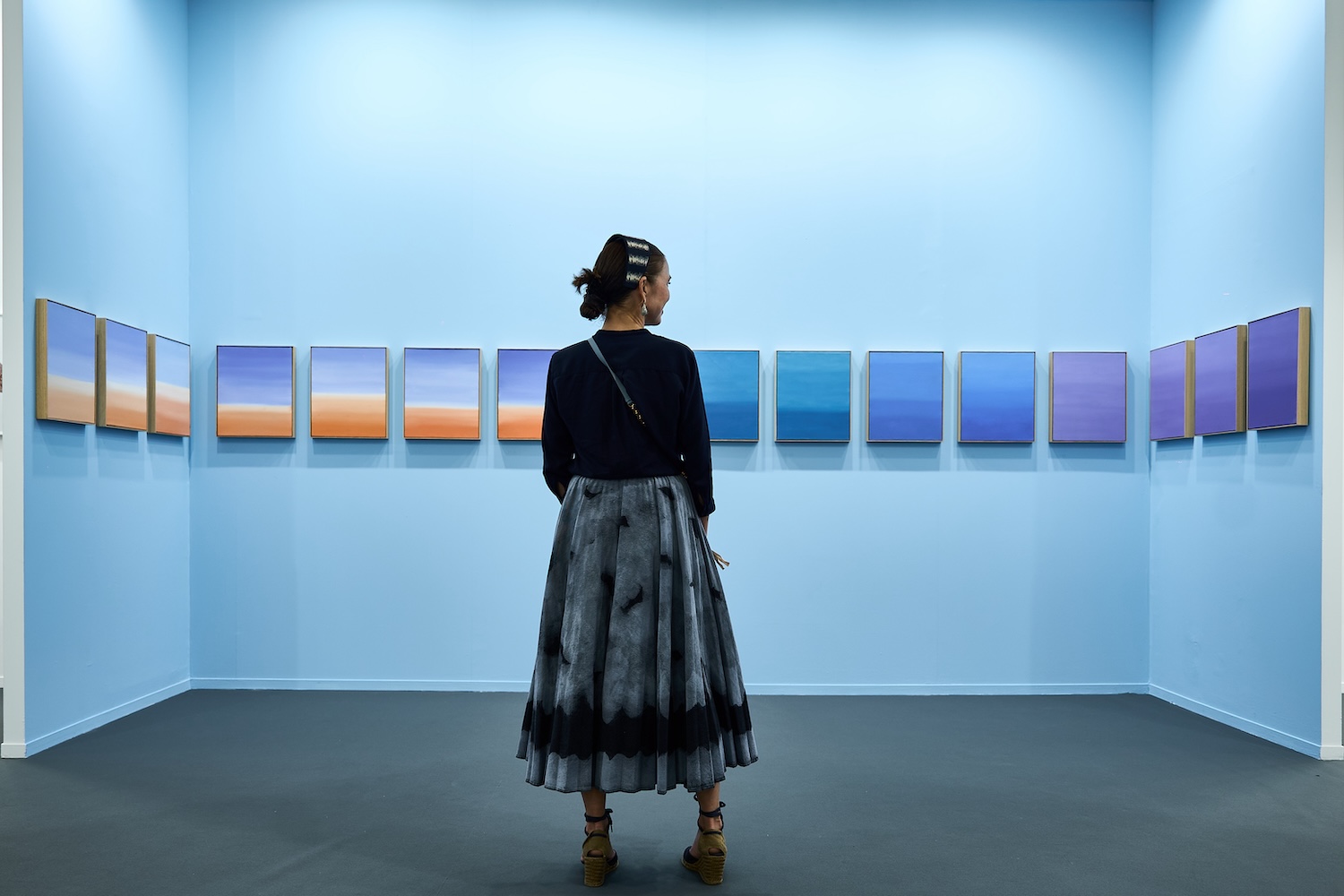
Photo by Spark Media, courtesy of Art Dubai.
Exploring the Nuanced Artist’s Journey
My attention shifted to the art itself and the artist’s journey. I wondered if they enjoyed creating their art or ever felt a conflicting exhaustion of repeating the same generational stories and expressing their sense of diasporic displacement.
Take, for example, Samira Badran‘s painting Jerusalem Barricade 2, painted in 1995, and Tagreed Darghouth‘s painting from The Tree Within; A Palestinian Olive Tree series, painted this year, 2024. Both paintings indicate Palestinian presence through entities that imprint their daily experiences and interactions.
The most moving piece was Dana Awartani‘s Let me mend your broken bones 2, created in 2023. The Saudi artist of Palestinian origin’s artwork consists of a series of silk fabrics naturally dyed and stretched onto frames with holes. The holes are mended by darning and “correspond to the silhouettes of physical violence enacted on buildings in Arab nations at the hands of Islamic fundamentalists,” such as in Aleppo, Syria. However, the pieces at Art Dubai were most likely created in 2024 as they were specific to Gaza City, Palestine, and highlighted buildings such as the Byzantine Church of Jabalia, Rafah Museum, and others.
As I looked at these artworks, I thought of the hours it takes to create them and how each stroke of paint and each thread is an active reminder of the harrowing politics at play and the constant fight against cultural sanitization. That was also depicted in the NIKA Project Space corner with the exhibition “I Can No Longer Produce the Limits of My Own Body,” curated by Nadine Khalil, specifically with Mirna Bamieh’s installation, Sour Things. The Kitchen that explored the politics of perishing while using fermentation as a symbolic instrument to expand our penchant for listening, learning, and caring. It’s also worth noting that fermenting vegetables is an essential part of the Middle Eastern culinary culture.
Thematic Parallels and Preserving Cultural History
Whether the artwork was created today or in the 1990s, thematic parallels were easily found. For the most part, artists communicate the times, whether intentionally or not. But when an artist continuously and intentionally communicates the times for preservation, that could be something to reflect on. And my mind often lingers on that unspoken fatigue.
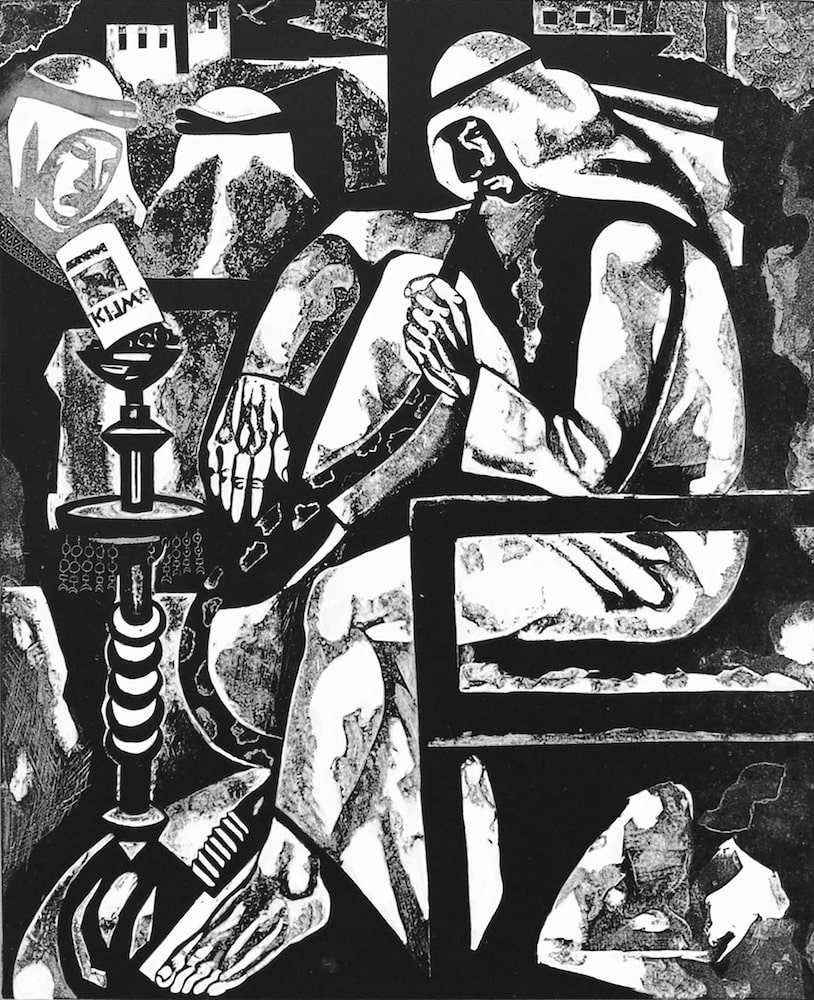
Abdulsattar Al-Musa, 1986, Series of “Al-Ars fe Al-rafae,” carving on cardboard, 58 x 70 cm, courtesy of the artist and Art Dubai.
In perhaps slightly less somber corners of the fair, we found depictions of simple day-to-day artworks from Yemini painter Hakim Al-Akel, with his 1991 painting Dialogue in the market, and Iranian artist Moslem Khezri’s 2021 oil painting We Keep Reviewing 65, which explores an Iranian all-boys educational environment. Abdulsattar Al-Musa, a Saudi artist who spent considerable time in Russia, created numerous artworks such as Sadness in Sabra, 1986, often considered love letters to his Saudi upbringing.
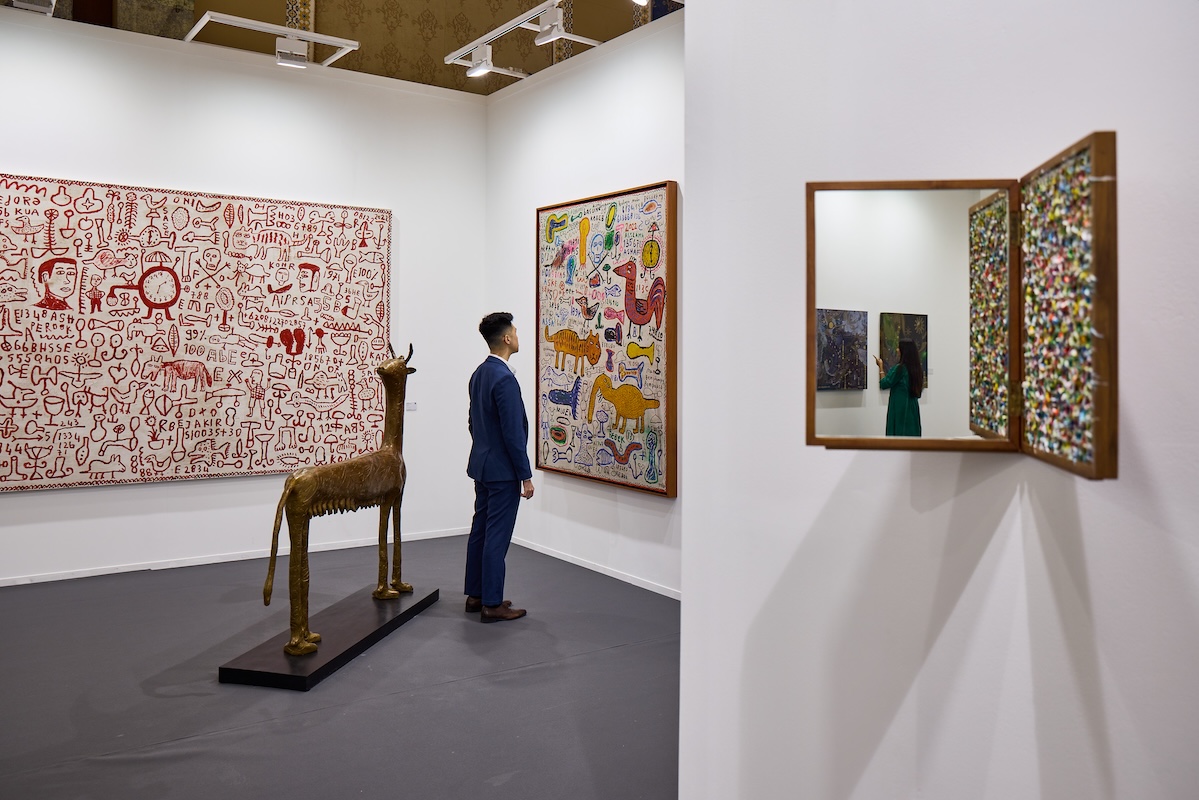
Photo by Spark Media, courtesy of Art Dubai.
The Kazakhstani artist Said Atabekov created a photography series called Prayer of a Thousand Horse Riders (0532) in 2023. The series documents Kupkari, a traditional Central Asian group competition played on horseback in which equestrians compete to carry a goat or sheep carcass to a goal. In some photos, we can see the riders and horses wearing branded attire. The Lexus-branded horse reminded me of sports sponsorships as found in F1.
Those themes lead us to other comparable detours where we interact with work that hints at the promises of Americana, such as Sahil Naik’s 2024 work, Ships in Doubt: Pursuits, Politics and the promise of Outer Space II. Other detours take us to pop culture commentary on environmentalism and sustainability (which we also think about daily given the climate crisis), such as the 2023 canvas Fallen Trees showing the ongoing Destruction of the Forest (hahaha painting) by Claudia Comte.
Yet still, all those corners and corridors led to the center that lays the ground for the delightful, bittersweet, and moral duty of preserving cultural history. This year, Art Dubai demonstrated that regardless of any utopian promise for a better and more progressive future, technological or economical, we always return to our roots.



